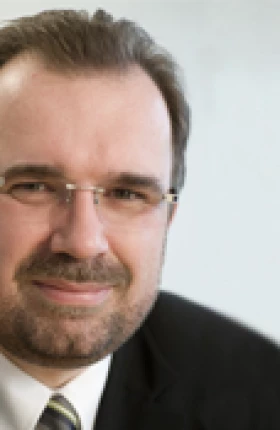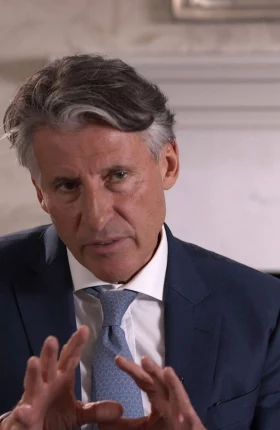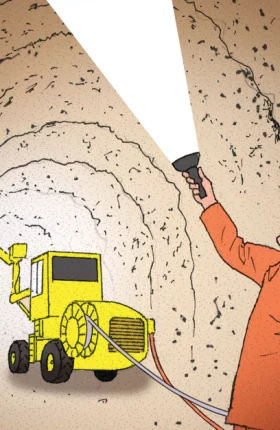When Alexey Alexandrovich Mordashov took the helm at Severstal in 1996 at the age of 30, the newly privatized Russian steel and mining company was struggling to become profitable after decades of government control. Today Severstal is one of the world’s ten most profitable steelmakers, with manufacturing and mining operations that reported 2011 revenue of $15.8 billion and earnings before interest, taxes, depreciation, and amortization (EBITDA) of $3.6 billion.
In the process, Mordashov, Severstal’s biggest shareholder, has become the forty-fifth richest person in the world, according to Forbes, and Russia’s third richest, with an estimated net worth of $15.3 billion. Unlike other major Russian entrepreneurs, Mordashov, has worked at the same company he joined after graduating from university. Starting in 1988 as a senior economist, he soon became chief financial officer and then CEO.
After taking Severstal private, Mordashov restructured the company by slashing the workforce, making it more vertically integrated, and taking it global. Among its overseas holdings are an integrated steel mill in Ford Motor’s former River Rouge complex near Detroit, a huge mill in Mississippi, and iron ore operations in Liberia and Brazil. Severstal’s specialty is high-value steel products and unique niches.
Severstal is now widely regarded as one of Russia’s best-managed corporations. Mordashov recently discussed with Hubertus Meinecke, a senior partner and managing director in BCG’s Hamburg office, his management approach, his strategic vision for Severstal, his biggest challenges, and his passion for value creation.
You have come a long way since you took over as the CEO of Severstal in 1996. What were the key milestones along the way? And what were the challenges that you faced?
I became CEO when the profitability of the company was minus 10 percent. It was an era of big turnaround and a big, big restructuring. Just the simple introduction of basic management was a key issue and brought a lot of fruitful results. We were looking for low-hanging fruits at that time. Nonetheless, it was very, very productive and very, very effective.
Since 2004 and 2005, we started to look at expansion of the changes. We became vertically integrated at that time and started to become international. We bought our first company, in the United States, in 2004. It was a more romantic period, when we looked at many options and there was more enthusiasm, probably based on the overall track of the world economy.
After 2008, there was a new stage in our development, when two processes overlapped and combined together. One was the process of restructuring the company after the crisis. Up-stream integration and downstream integration were all very important—especially up-stream integration. We proved again that, in order to be successful in our industry, it is necessary to be able to produce at low cost and to have a sound business model to be able to sell at a high price.
At the same time, in 2007 and 2008, we started to think about long-term competitive concepts for Severstal. It was also quite a romantic time, when we all fell in love with Jim Collins’s concept of “good to great.” We started to think of “hedgehog concepts” for Severstal.
How would you describe the current business model? And in what sense is it different?
The biggest difference is that we are much more focused. Basically, in our industry, to be successful you should not invent something much better than anybody else. You should apply quite common and well-known things in an appropriate combination. Also you should be agile enough to invent something obvious, something small, to stay a step ahead of your competitors.
If you were to describe the culture today at Severstal, how is it different than five years ago? And what was your role in shaping the new culture?
I believe that today's culture is a little bit less like—but still typical of—our culture of four or five years ago: a lot of negligence, a lot of cynicism, a lot of detachment. In large degree, this was based on behavior inherited from the past decades of Russian history, from the past centuries of Russian history. And it's a big, big issue for our company and for our country. What we should create for the future is a culture of belongingness, a culture of trust, a culture that will reward people who deliver and that will motivate people. A culture that will facilitate the self-realization of people.
Let me ask you a very personal question. I read in the Forbes ranking that you are rated as the third-richest Russian. What drives you?
Very simple: value creation. A passion to create value. I’m a manager. I’m not a businessman. I never left my company and went to the wild private business like some Russian entrepreneurs. I joined Severstal after graduating from university in 1988. I just had a very fast career path. I was CFO of the company when privatization took place and then became CEO very quickly. As a defensive mode, we just privatized the company, which was very cheap at the time because it was a loss-making company. This made me an entrepreneur. I never moved. I always stayed a manager. I am a manager by my heart and soul and all my attitudes. What drives me is the passion to create value. I like to create value wherever I can. As a side effect, I became rich.
You have achieved a lot in your positioning in steel in Russia. But you have broadened your portfolio already, for example with Power Machines. You have an international footprint already. How would you describe your aspirations going forward?
I believe in a portfolio approach, because you don’t know the future—and it’s important to have a certain balance between different segments, sectors, and industries. In this case, what I have in my portfolio is basic materials. Steel and mining are one part. Another step in my view was Power Machines. It’s more advanced technology, especially in machine building, and is quite an advanced company. But I also believe that investments in some kinds of services, like tourism, could be important. And it seems to me it’s also important to participate in promising companies or businesses that have certain potential to grow.
Is it an objective to develop Severstal into a global leader with a global footprint?
Yes, of course. One hundred percent. But it’s important to understand what “global leader” means in our industry. First of all, you'd like to be the global leader in margins. Of course, you'd like to grow in volume of EBITDA as well. But quality of growth is more important for us than volume itself. We already learned the lesson that volume could be very large but causes all sorts of other problems. And, of course, we would like to be global. Not because we just like to be global by definition. There could be some areas, in some niches, to establish good business, to develop good business, and to benefit from it. Because of that, we look at the whole world as a place to find opportunities. And yes, we would like to grow. But it should be through a combination of local opportunities, our strengths, and our competitive portfolio.
What is the biggest challenge to becoming global?
There are basically two. One is people. Just to have enough talent. The other is to not miss opportunities—to understand what's going on, to understand trends, to understand potential ideas, and to be creative enough to find opportunities.
When you look at the Glencore–Xtrata merger, do you see strong implications for your business? Do you see changes in terms of operating model?
This merger is not something new. In terms of tendencies, we definitely see already a high degree of consolidation. Basically, three or four companies control 85 percent of seaborne trade of iron ore. I don't think that further consolidation through the actions you mentioned will change the situation. Upstream integration and raw-material participation became quite important. Because of that we have mining in Russia, which we are improving continuously through investments and the business system. On the other hand, we have a project in Liberia. We have pretty large and good-quality deposits of iron ore in Liberia. We are looking for new projects in coking coal, so far primarily in Russia. We have projects in Brazil for iron ore as well. And yes, we would like to increase our participation in mining.
Participation in mining as long as it’s increasing your self-sufficiency rate?
No, no. It’s far beyond. It’s considered as a separate business, as a self-sufficient business.
I would like to thank you very much for sharing your insights and your passions.
Thank you.






